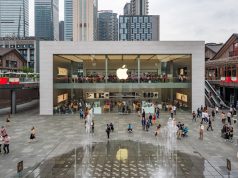Amazon’s stock has been amazing throughout the year which had lightened up Wall Street expectations as well. After a deep analysis of Amazon’s Black Friday and Cyber Monday sales, it is well observed that Amazon is taking a big chunk of market share from brick to mortar retailers. On the other hand, retailer has presented several details on how it could deliver products and improve its services ahead for its clients in future.
Uptil now, Amazon is performing well to second in stock with S&P 500 with attaining approx. 117%. Netflix is on top in better performance.But till what extent, Amazon is likely to stay a good performer in market as a retailer? Extrapolating Amazon’s past growth rate into the future is a risky business, and none of the top-performing investment advisers monitored by the Hulbert Financial Digest appears willing to do so.
As what a well-known economist, John Maynard once stated in early 20th century: “Tress don’t grow to the sky”
Amazon’s fastest growth in market is surely acknowledgeable by Wall Street’s expectations if we analyze the year-over-year increase in yearly sales. Since year 2011, there has been a gradual increase in yearly sales of Amazon (ranging from US$13.0 billion to US$ 14.5 billion which equals to that of an average US$ 13.7 billion per year estimate).
According to FactSet, now on overviewing the market sales of year 2016 – year 2019, the Wall Street estimates consensus for the sales to grow by an average of US$ 25.9 billion/year (or may be double to that).
But Amazon admirers do not believe upon the above given figures – after all growing company’s percentage growth endorses larger sales rates.
However, Amazon’s size cuts both the ways – every company finds it difficult to maintain its growth rate as its size gets bigger. Amazon in that case is certainly not standing out of that law domain.
Moreover, in future Amazon might not be able to continue taking even US$ 13.7 billion of annual market share from the other retailers, much less the US$ 25.9 billion that Wall Street is forecasting for the next year through 2019.










